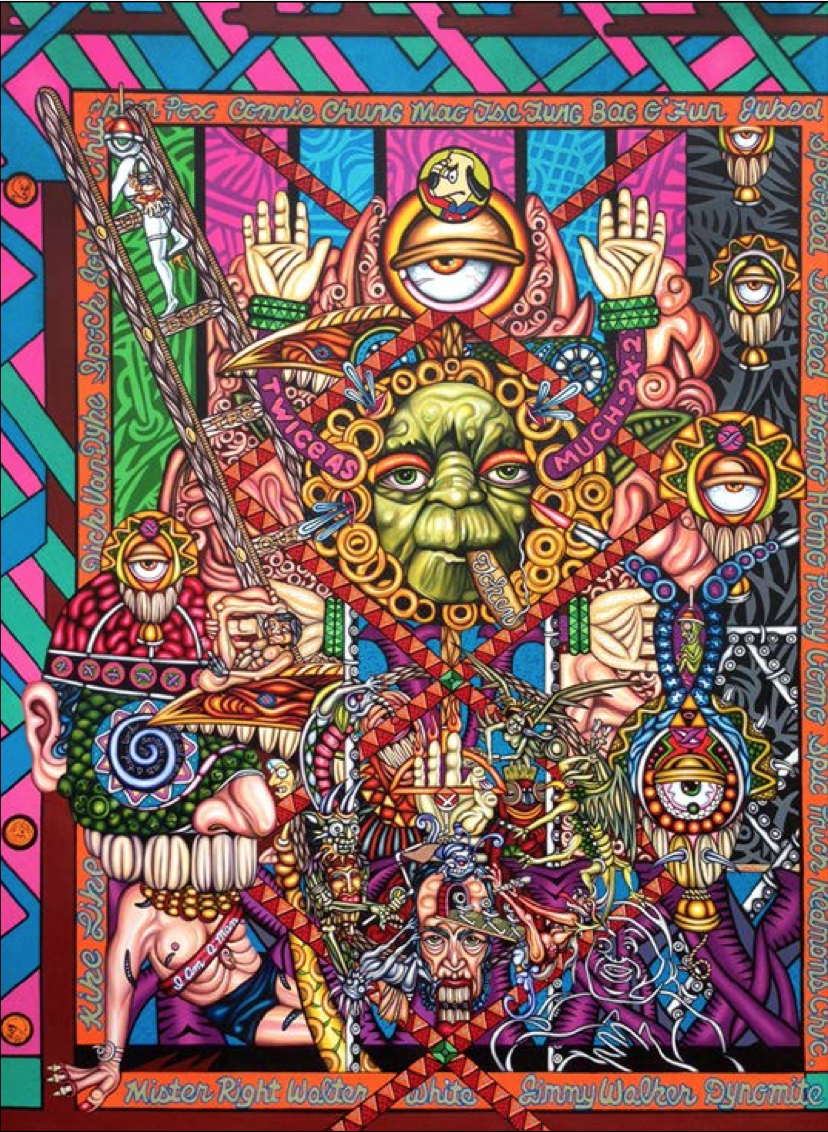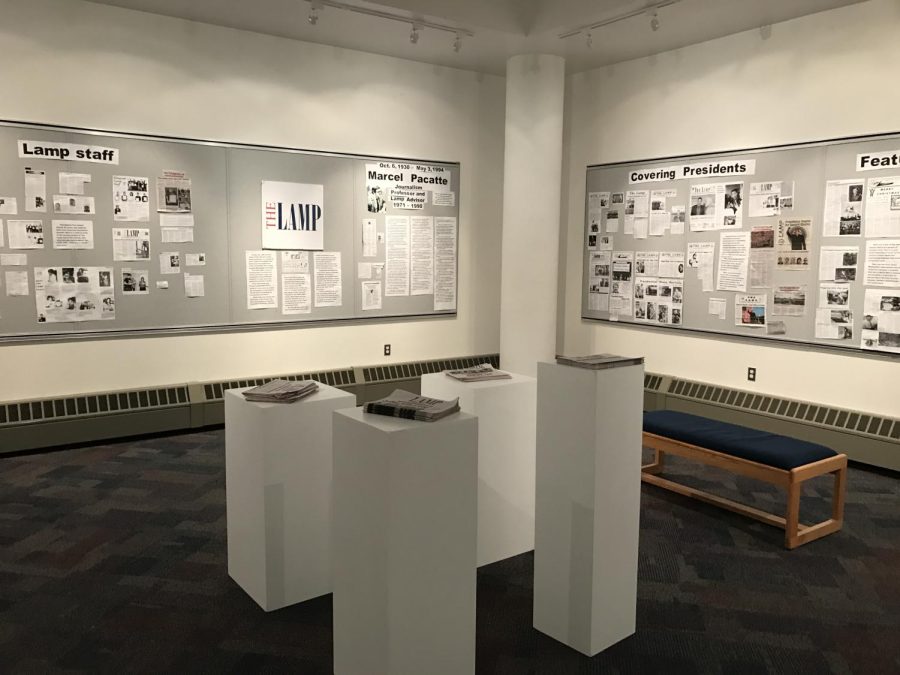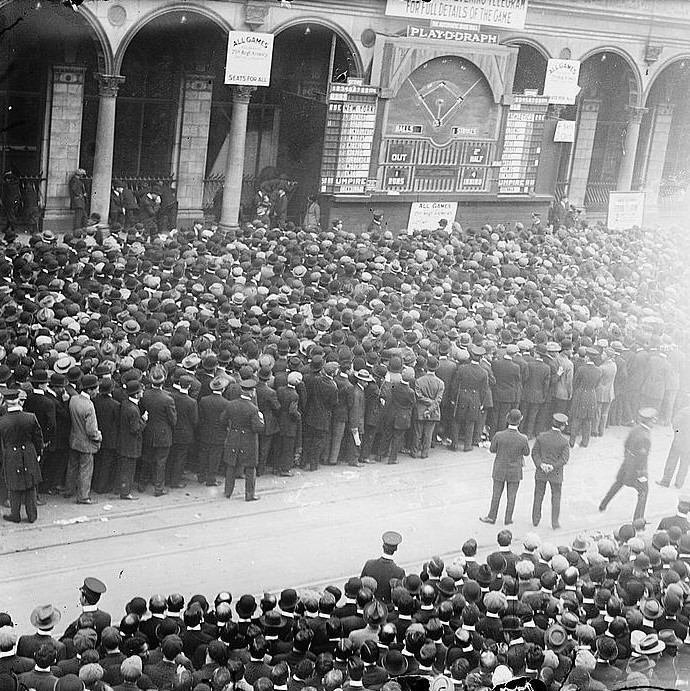For those of you who don’t believe in the power of art, you must not have seen any of Thomas Whalen’s work. Though Whalen is primarily known at LLCC for being a graphics teacher. He primarily devotes his artistic expression into paintings.
Whalen credits a group of artists for his style.
“There was a group from Chicago that appealed to me in the late ’70s called the ‘Hairy Who,’ also known as the ‘Chicago Imagists,’ who people kind of see as a folky, cartoony, low-brow art,” he said. “I was exposed to them early, and I had something in common with them. This is where my style originated. I went through a period where I only did photographic images as paintings, and to be honest, I just got bored with it. I like the imagination aspect more so than working with reference material.”
Whalen, a Professor of Art at Lincoln Land, has spent roughly a year and a half working on the, “Tale of the O’s.”
It is exhibited in the show, “Pro-Text: When Words Enter Visual Art,” that opened Sept. 12 and continues through February at the Illinois State Museum in Chicago. Each piece in the show incorporates the use of text within the art.
The 5-foot-6 oil on canvas piece is as loud as any work of art can get.
“It’s very bold and in-your-face,” Whalen said, of the piece which takes on white privilege as its subject matter. He started it long before the Michael Brown shooting, but it is fitting timing.
“I’ve been researching white privilege for about a year and a half. White privilege is a segment of life that one’s born into, not just based on skin color. It’s based on things that we take for granted,” Whalen said. “When I went to make my piece, I considered this piece as a stereotype of what people assume being white is and what it is not being white.”
The inspiration for the piece’s title remains fitting for the subject matter.
“‘Tale of the O’s’ itself comes from a diversity training video they used to use in the late ’70s, early ’80s,” he said. “The video starts out by what happens to the letter O when it enters a room of letter X’s. What happens is that it starts to take on the characteristics of what
it entered. If the O enters a room of X’s who speak with an accent, the O will start using the accent, basically assimilating what they are. The training seemed so old-fashioned that it interested me to look further.”
He has gone above and beyond to get the facts he needed to manifest his message placed within his artwork.
“I used my colleagues here at Lincoln Land, such as Dave Reynolds and Tameka Smith and several friends to help me research. I’ve read almost everything I could find on this subject.”
Whalen creatively placed Yoda within the center of his painting, embodying him as a greater symbol.
“I came to the conclusion that with this ‘O’, I tried to pick someone who was a figure that could be considered a race that we have, so I picked Yoda. Yoda was, of course, from another age, was a different color.”
This text is apparent on Yoda’s arms, as well, such as the phrase, “Twice as much.”
Whalen said the text means that “because of race or segregation, (non-whites) have to do the work twice as much to equal that of a white person, or a person in power,” Whalen said. “When I went to make my piece, I considered this piece as a stereotype of what people assume being white is and what it is not being white. I tried not to just pinpoint black or white or yellow or red, but I tried to include them all.”
The text, which is included in the border of the painting, is enough to leave one astonished.
“I included my own poem on the corner, which mentions every ethnic slur there is. And it was meant to entice people to see the ignorance of themselves, as they read it.”
Whalen mentions the controversy surrounding the “Tale of the O’s.”
“It’s a mirror of our society, how we look at other people, the assumptions that we make, the conclusions without the facts. You can’t judge a book by its cover,” he said. “It’s very timely right now. It’s already caused somewhat of a controversy. I’m sure I’m going to have to be ready to explain what the painting is really about. It took guts to do this piece, I think, especially during this Michael Brown incident in Ferguson. Not saying this painting assimilates what happened to him, but the whole idea of what happens when the media gets hold of something, the truth becomes tarnished. You don’t see what really happened. All you see is people reacting on something they don’t really have the facts on.” As much modern art is open to the viewer’s interpretation, Whalen’s “Tale of the O’s” loudly conveys the message he designed to get across. “I believe the power of the word. Sometimes a picture isn’t worth a thousand.”
Jordan Minder can be reached at [email protected] or 217-786-2311.










